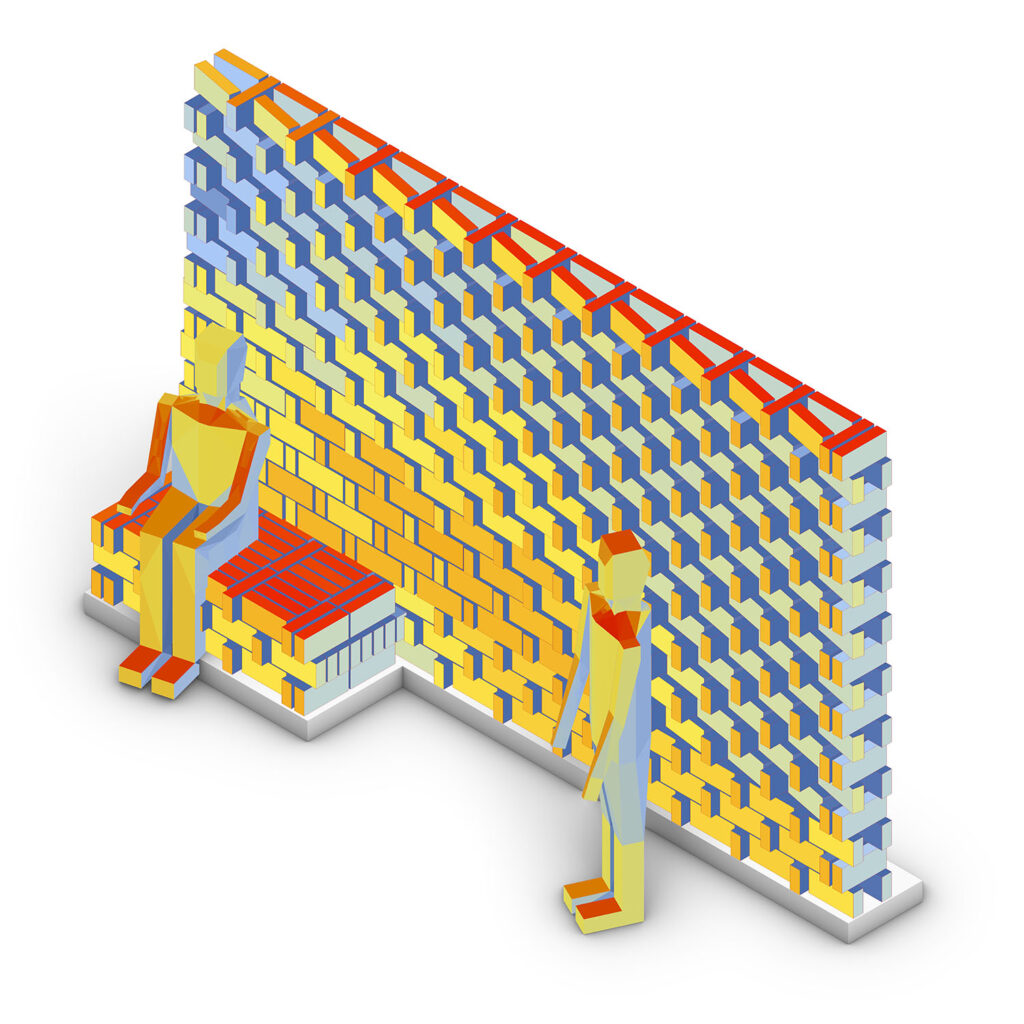Project description:
One of the main strategies to decrease the heat stress inside cities is ample vegetation, for example, along sidewalks. This has been proven to improve the human comfort level and encourages people to actively use the public space. Another option, especially for dense areas where the amount of greenery can not be increased, is to consider the shading of building structures or to create surfaces with minimized solar exposure. With the Climate Active Bricks project, developed in August 2020 as part of a design-build summer school, we investigated whether we can apply digital design and robotic fabrication technology to directly improve the exterior facades of buildings. We explored whether the creation of customized site-specific self-shading effects in the external facades of buildings can reduce solar exposure and thus decrease the storing and radiation of heat to improve the ambient climate in urban areas.
By performing digital simulations, we analyzed various designs to affect the solar exposure of the brick constellations. Without any modification, the original flat front surface of the bond is, as any other flat surface, directly exposed to the sun. By shifting the frontal brick towards the back, the amount of exposed surfaces is reduced through the shading of adjacent protruding bricks. To reduce solar reflections even further, we rotated the front brick to change the angle of incidence and fall-out in reference to sunlight. The larger the angle with respect to the sun’s location, the lower the value of the absorbed radiation, which results in a decrease of solar radiation and heat stress.
Team
Technical University of Munich
Department of Architecture
TT Professorship Digital Fabrication
Prof. Dr. sc. ETH Kathrin Dörfler
Dipl. Ing. Julia Fleckenstein
Associate Professorship of Architectural Design and Building Envelope
Dr.-Ing. Architekt Philipp Lionel Molter
Climateflux


